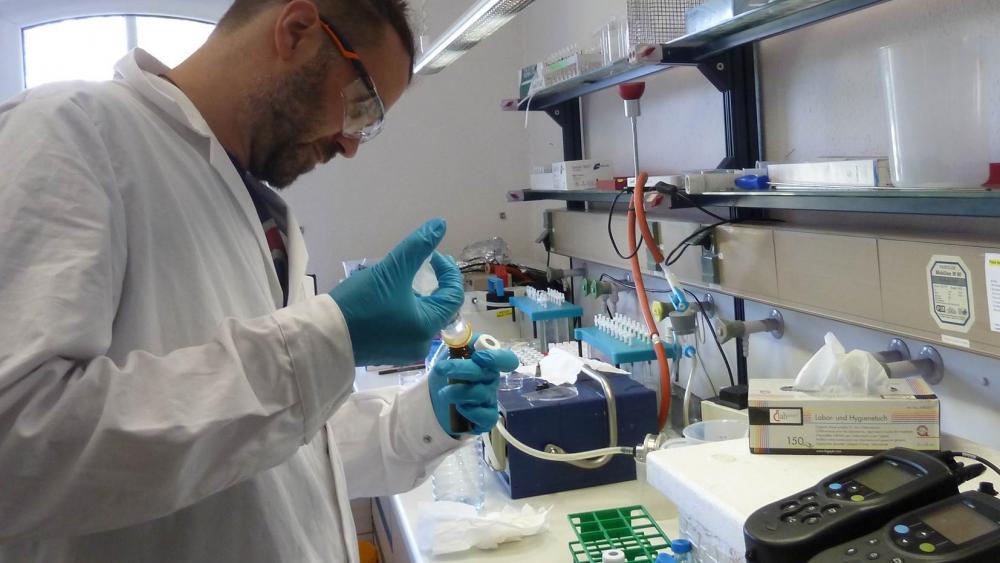
The freshly taken water samples are immediately processed in the laboratory. | Photo: Martina Bauchrowitz
As primary producers algae are at the beginning of the food chain. They use photosynthesis to build their biomass from carbon dioxide and water, thereby releasing oxygen. Part of this oxygen is immediately reused during respiration by the aquatic organisms, i.e. not only by microorganisms and to a lesser extent by animals, but also by the primary producers themselves, which in turn leads to a decrease of the net photosynthesis.
In order to determine the effective algal photosynthesis in a lake, it is hence necessary to distinguish between respiration and photosynthesis. Therefore, Dr. Alexander Frank from the University of Erlangen-Nuremberg applies a method that is already widely used in marine research. During the LakeLab experiment, he takes weekly water samples in which he determines the oxygen isotope composition of the dissolved oxygen. This allows estimating the photosynthesis in each of the 24 enclosures, which differ due to the varying algal densities caused by the experimental set-up.
The technique is based on the fact that many chemical elements occur as stable, non-radioactive isotopes with different atomic weights. Oxygen (O) comprises the lighter 16O isotope and the heavier 17O and 18O isotopes. In the atmosphere they are present in a constant isotope ratio: 99.76 % 16O, 0.037 % 17O and 0.20 % 18O. Since the oxygen produced as a waste product during photosynthesis is photolytically split from ambient water (H2O), it contains fewer 18O isotopes and is thus isotopically lighter than the oxygen in the atmosphere. This makes it possible to distinguish the amount of oxygen formed during photosynthesis from the amount of oxygen dissolved in water from the atmosphere. In contrast, the oxygen-consuming processes lead to the enrichment of the two heavier oxygen isotopes in the water, because the lighter 16O isotopes are preferentially incorporated during respiration. Such an altered oxygen isotope signature can be determined by mass spectrometry. It provides information on the effective photosynthesis performance of the lake.





